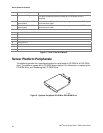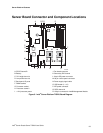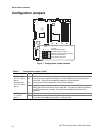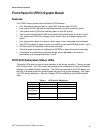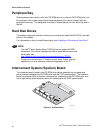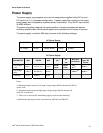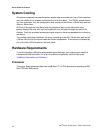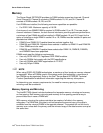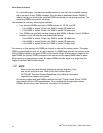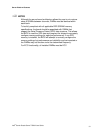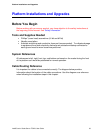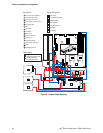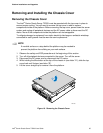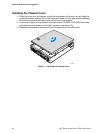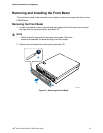Server Platform Features
In a mirrored system, the maximum usable memory is one-half of the installed memory,
with a minimum of four DIMMs installed. Since the data is duplicated across DIMMs, it
means that up to one-half of the installed DIMMs are actively in use at any one time. The
remaining DIMMs are used for mirroring.
Two methods for memory mirroring are available:
Four identical DIMMs are used in DIMM sockets 1A, 1B, 2A, and 2B.
⎯ If the DIMM in socket 1A fails, the DIMM in socket 2B takes over.
⎯ If the DIMM in socket 1B fails, the DIMM in socket 2A takes over.
Four DIMMs are used with identical single-ranked DIMMs in Banks 2 and 3. DIMMs in
sockets 1A and 1B must be dual-ranked and identical.
⎯ If the DIMM in socket 1A fails, the DIMM in socket 1B takes over.
⎯ If the DIMM in socket 2A fails, the DIMM in socket 3B takes over.
⎯ If the DIMM in socket 2B fails the DIMM in socket 3A takes over.
For memory on-line sparing, one DIMM per channel is used as the memory spare. The spare
DIMM is not available for use, but is kept in reserve. If a DIMM begins to fail, the content of the
failing DIMM is copied to the spare DIMM in that channel. When all of the data is copied to the
spare DIMM, the primary DIMM is removed from service and the spare DIMM takes its place.
When memory on-line sparing is used, the spare DIMMs must be equal to or larger than the
largest in-service DIMM in that channel.
NOTE
Memory mirroring and memory sparing are mutually exclusive. Only
one can be active at a time. Refer to the Intel
®
Server Board
SE7520JR2 Technical Product Specification for additional information
regarding the memory sub-system.
All memory components and DIMMs used with the Intel
®
Carrier Grade Server TIGI2U
must comply with the DDR specifications. For a complete list of supported memory
DIMMs, see the links under “
Additional Information and Software.”
Intel
®
Carrier Grade Server TIGI2U User Guide
30



